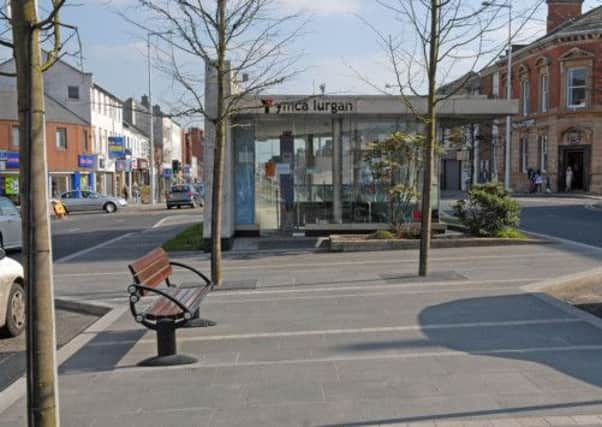Youths have poor image of home town says report


Just eight per cent see the town centre as a shared space and 87 per cent said all or most of their friends came from the same community background. The vast majority, 66 per cent, felt that community relations in the town are poor or very poor.
The report by the Institute for Conflict Research and commissioned by the Lurgan Town Project spoke to young people aged between 14 and 21 from across Lurgan.
Advertisement
Hide AdAdvertisement
Hide AdThe Community Dialogue Tool report found that 35 per cent of young people avoided particular areas of Lurgan because of their reputations and 63 per cent felt that flags increased tension.
“Eighty-four per cent of the respondents to the questionnaire had not yet been born when the ceasefires were declared yet the legacy of the conflict was present in all their lives and had been learned from families and communities rather than experienced,” the report stated.
“The high level of the young people’s sectarian segregation is based primarily on their experiences of the schooling and housing systems. Many participants feel that wearing uniforms in different areas of the town encouraged sectarian abuse and attacks.”
While the majority (63%) said there is nowhere in particular that they are afraid to go in the town, the two most avoided areas are Mourneview and Kilwilkie estates.
Advertisement
Hide AdAdvertisement
Hide Ad“Clearly community background is an important factor in this regard, with 95% of those young people who avoided Mourneview being Catholic and 71% of young people who avoided Kilwilkie being young Protestants,” the report stated.
Recreational drug and alcohol use is widely accepted as a norm by those over the age of 15 with the lack of ‘anything to do in Lurgan’ offered as reason. The three public facilities used most often by young people are the local parks, 61%; the swimming pool 58%, and the local leisure centre - 56%.
Protestant young people are slightly more inclined than Catholics to use the swimming pool (52% compared to 44%) and local parks (59% compared to 51%). The same proportion of Catholic and Protestant young people report use the leisure centre (56%).
Key issues affecting young people in Lurgan are considered to be segregation (67%), drug use (67%), fighting with the ‘Other’ community (66%), crime (61%) and racism (39%). The impact of homophobia was raised in a number of focus groups, as were concerns about self esteem, suicide and self harm. Economic dependence, university fees and a lack of local employment for young people feed into their readiness to stay or leave the Lurgan area.
Advertisement
Hide AdAdvertisement
Hide AdMany young people consider the older generation to be ‘bitter’ and that their families’ focus on the past is the key inhibitor to their building cross-community relationships.
Fifty-nine per cent of respondents believe that parading contributes to community tensions, whereas only 17% feel that attending parades or being a member of a band is a positive experience. Only 5% of respondents said they attend July 12 parades. Very few make any distinction between church parades and a more militant parading culture. The majority feel that bands exert a negative influence on members beyond the parading arena and in some instances had impacted on which youth clubs young men felt able to attend.
Almost all the young people have access to the internet with 40% of respondents saying this is where and how they are most likely to engage with young people from a different community background. However many report that they had experienced anonymous sectarian and other abusive postings.
With the exception of ‘A’ Level politics students, very few participants are interested in politics, though almost 50% of respondents said that when they were going to vote, their choices would be based on the choices made by their families or friends. Their political focus is, in the main on the constitutional question, rather than ‘bread and butter’ economic and social concerns.
Advertisement
Hide AdAdvertisement
Hide AdMany had little confidence in how the police respond to young people making complaints about adult anti-social behaviour in the public spaces that they like to use.
Many consider themselves to be ‘demonised’ and ‘harassed’ by the police, in some instances producing multiple warrants by way of evidence. 61% of young people believe the PSNI to be ‘evenly balanced’ between the Catholic and Protestant communities though 9% of Protestants feel the PSNI are ‘too Catholic’ whereas 41% of Catholics feel the PSNI are ‘too Protestant’.
The young people felt regional, national and international media coverage of Lurgan was predominantly negative which significantly fed into their feelings of lack of pride or desire to stay in the area.
Most young people spoken to over 17 who lived in Lurgan and who did not use youth clubs and groups said they prefered to travel to Lisburn, Cookstown and Portadown and, less regularly, to Belfast to socialise both during the day and in the evening rather than spend time in Lurgan.
Advertisement
Hide AdAdvertisement
Hide AdMore young people from rural areas said they have better established relationships with people from communities other than their own. They tended to indicate a much less polarised set of experiences and friendships than those living in the town:
Of the 59 young people who reported avoiding Lurgan Park, the majority were much more likely to come from the Catholic community (52 respondents or 88%).
Lurgan is considered by many of the young people as somewhere in need of a facelift.
“People are drunk all the time”. “There’s no jobs for young people.” “Houses are all run down and look bad”. Comments such as these were significantly more commonplace than positive views which often had to be teased out of the respondents.